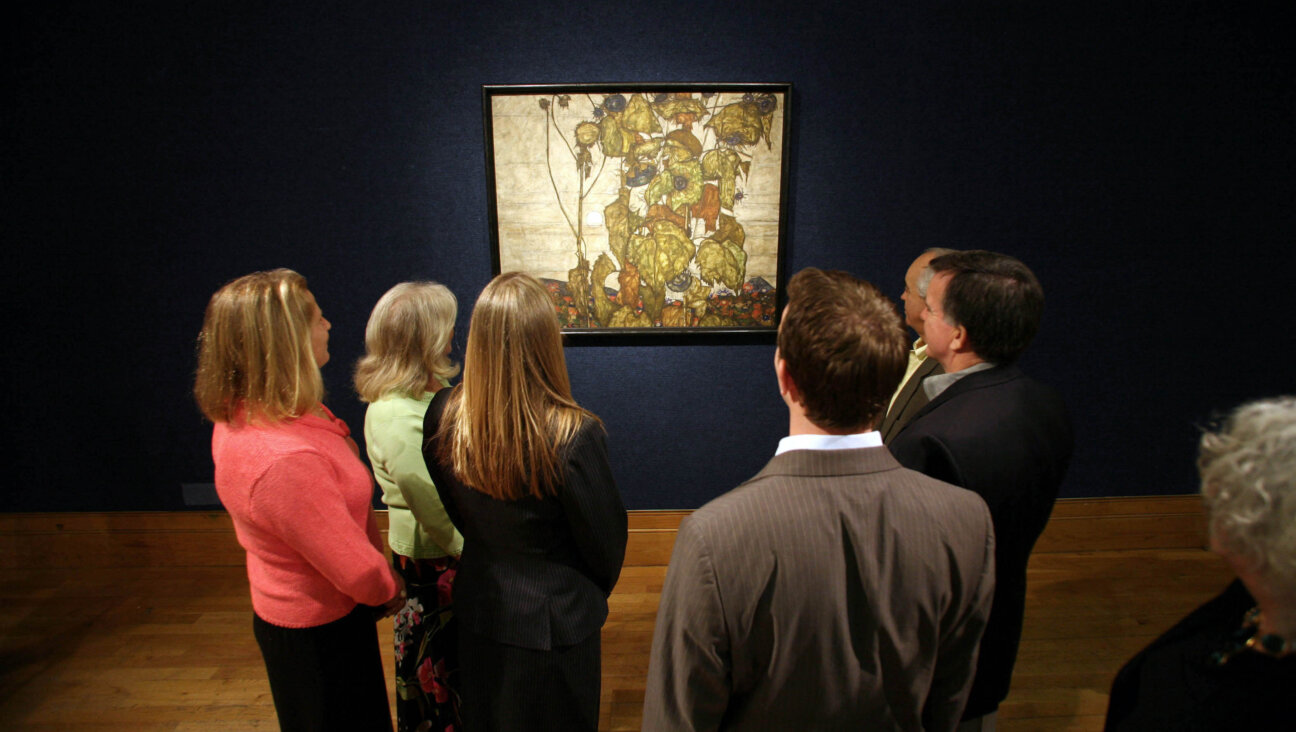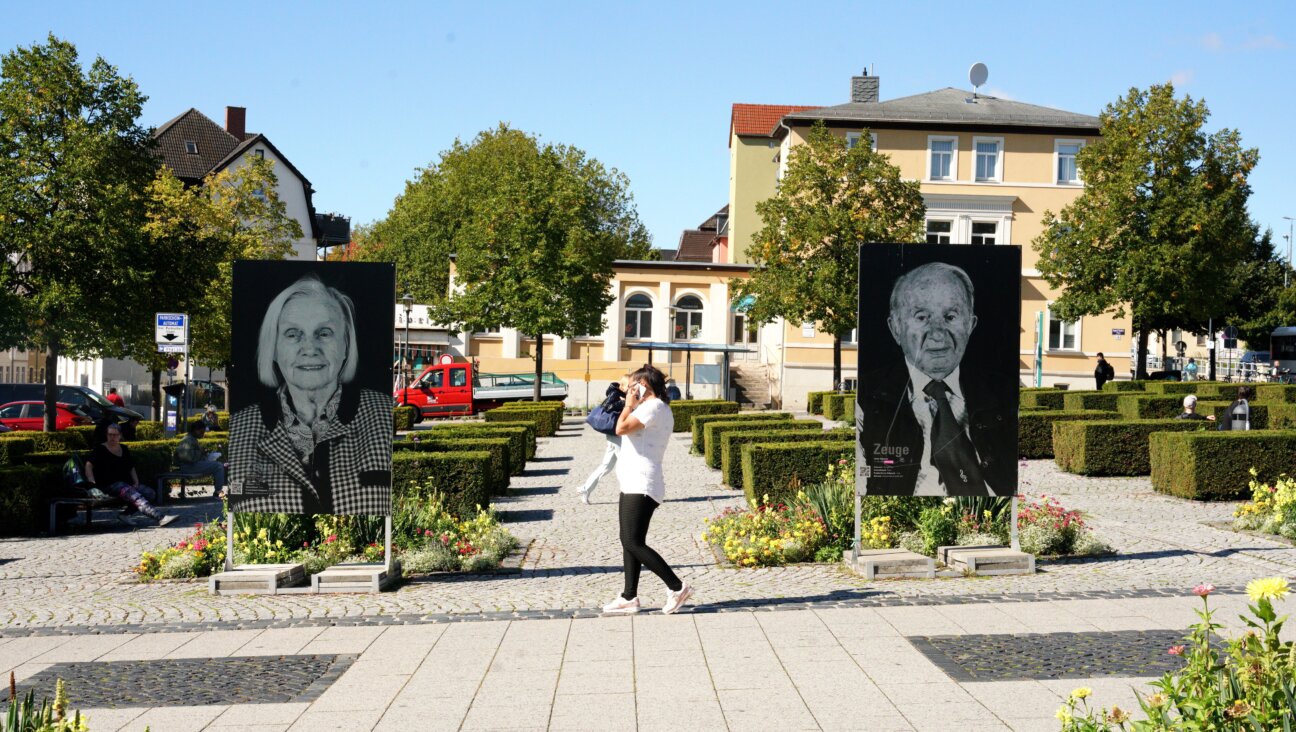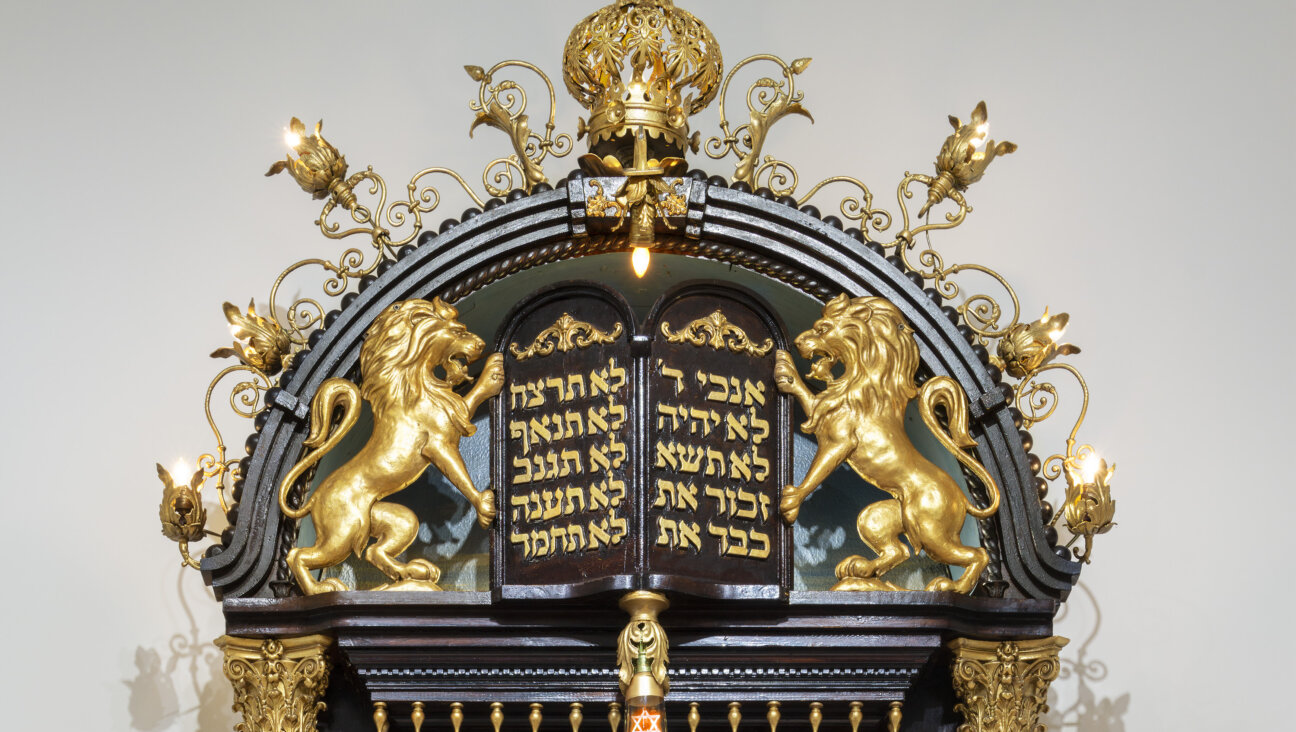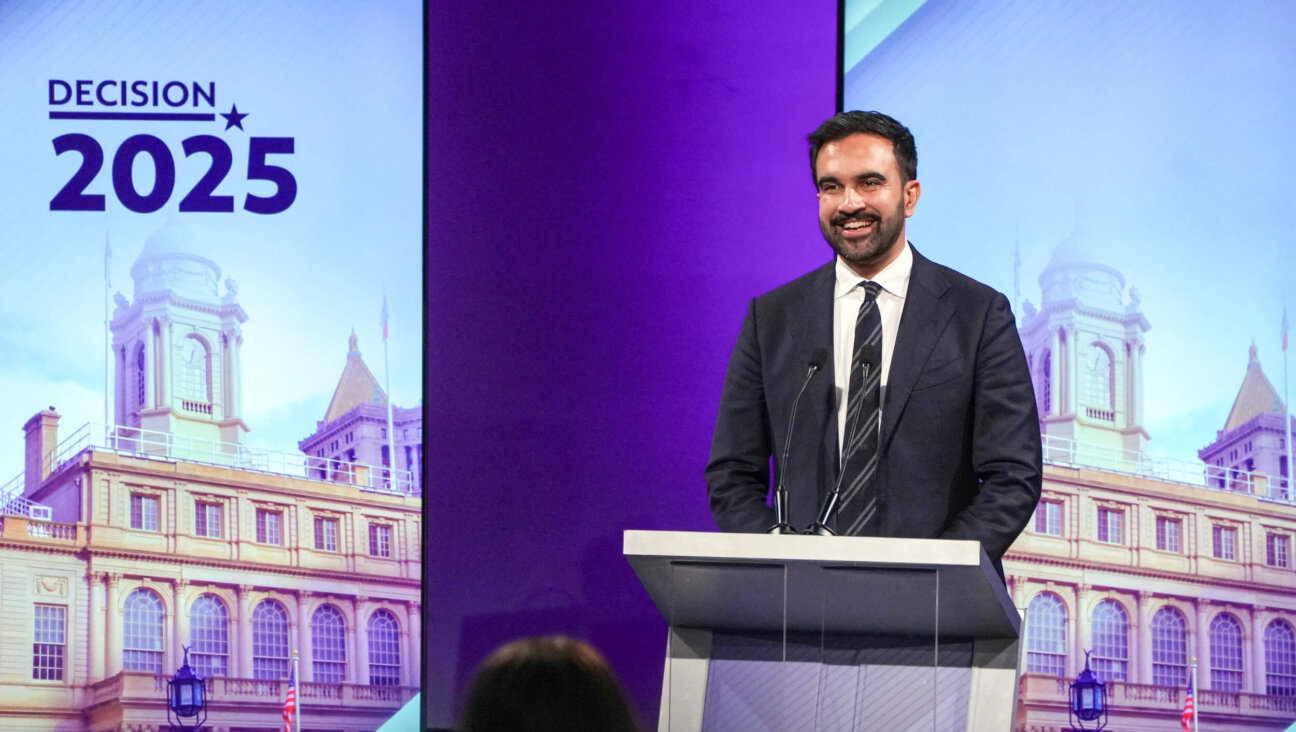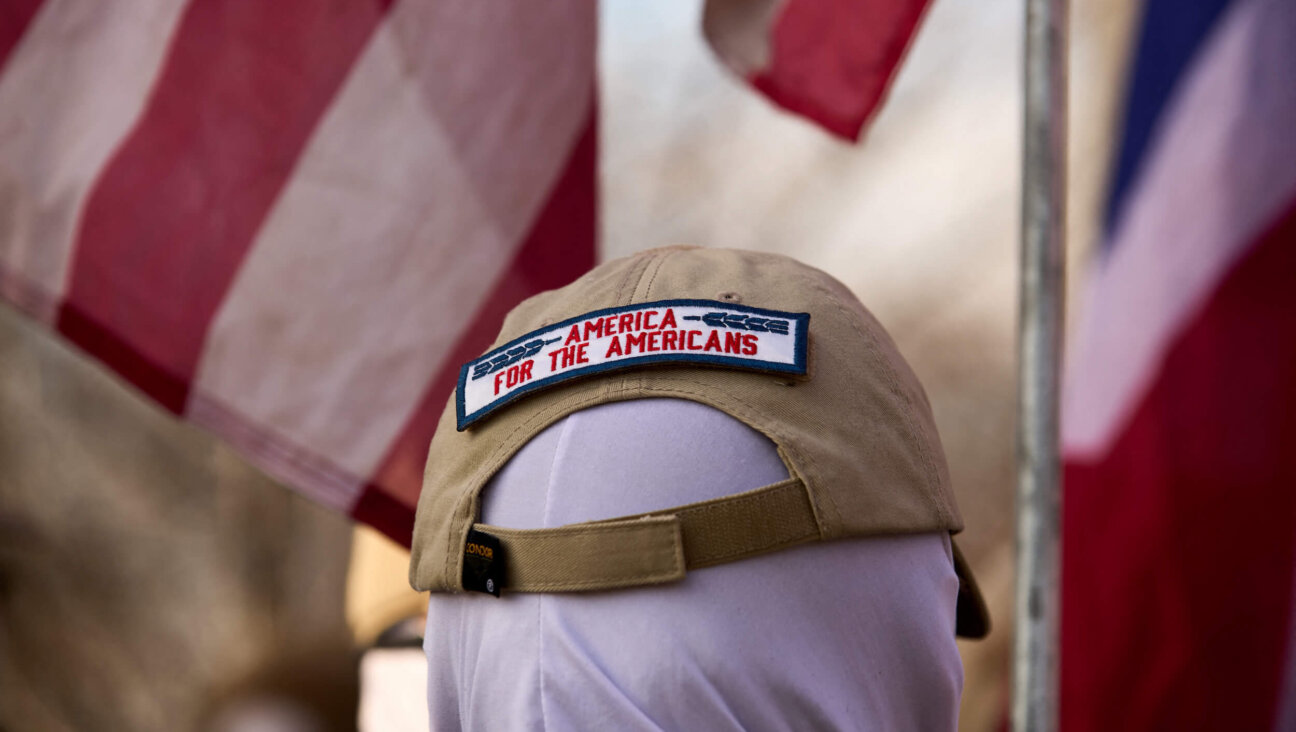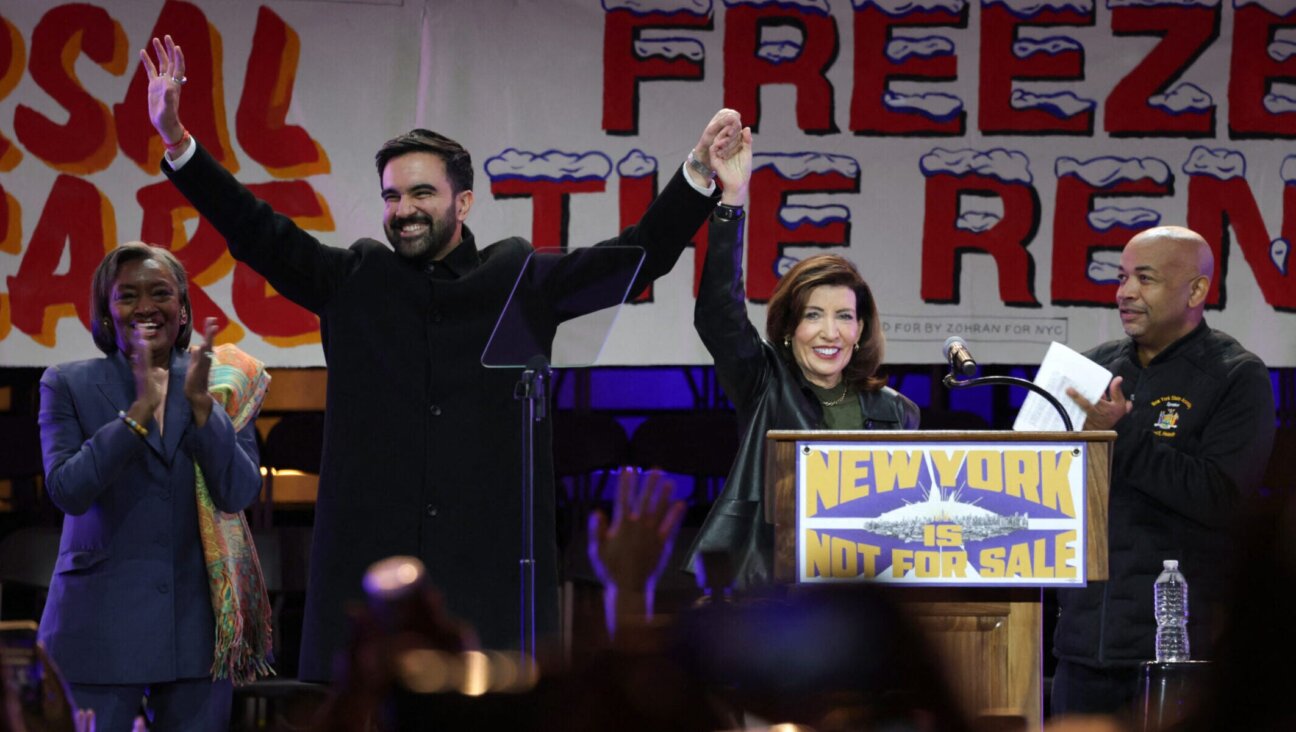The Jewish Roots of a Feminist Icon
In recent weeks, feminist artist Judy Chicago has been the subject of considerable attention, much of it revolving around the news that her seminal work, “The Dinner Party,” (1974-79), has finally found a permanent home as the centerpiece of the Brooklyn Museum’s newly constructed Elizabeth A. Sackler Center for Feminist Art, opening later this month. This development coincides with the recent resurgence of interest in feminist art, occasioned by the establishment of the Sackler Center as well as several new museum exhibits exploring the subject.
But “feminist icon” describes only half of Chicago’s identity; being a Jew — a Jewish woman, no less — has profoundly shaped her artistic outlook. The influence of her Jewish identity is explored in a retrospective currently on view at the Hebrew Union College-Jewish Institute of Religion Museum through July 6, titled, Judy Chicago: Jewish Identity. Co-organized by art historian Gail Levin, who recently authored an incisive biography on Chicago, and curator Laura Kruger, the show explores the interplay of Chicago’s religious background, political perspective and artistic sensibilities.
The artist, a sprightly 67-year-old with a fiery mane of red-orange hair, was born Judith Sylvia Cohen, the oldest of two children in a politically conscious, working-class household in Chicago. (She legally changed her surname in 1970 to express solidarity with the feminist movement.) Her father was a postal worker and labor organizer, descended from a line of 23 generations of rabbis, who “eschewed all things Jewish in favor of Marxism and socialism,” as Chicago recalled in a recent interview with the Forward. Nonetheless, her Jewish identity has affected her work. Although her upbringing was secular, it was infused with such Jewish values as tikkun olam, or repairing the world, which, in turn, fueled Chicago’s blossoming interest in women’s rights. Her Jewish upbringing also shaped her artistic approach, cultivating an interest in teaching through art, which “comes straight from the rabbinic tradition,” she said.
Chicago’s style is unusually accessible and collaborative. She has included text into the body of some pieces to explain their imagery, and has invoked the spirit of egalitarianism by involving hundreds of volunteers in the creation of some projects.
The confluence of Chicago’s Jewish identity and her feminist priorities is evident in many of her works, such as “Compressed Women Who Yearn To Be Butterflies” (1974) and “Voices From the Song of Songs” (1999). Her most famous work, “The Dinner Party,” which honors the achievements of 1,038 women throughout the history of Western civilization, adopts as a framework the religious ritual that recounts the Jews’ liberation from slavery: the Passover Seder. The installation features place settings for 39 prominent women as varied as Emily Dickinson and Eleanor of Aquitaine around a triangular table, and the names of 999 other honored women inscribed in gold on the white porcelain-tiled floor. One of the place settings is reserved for Judith, who was responsible for saving the Israelites from Assyrian aggression during biblical times. Jewish women also are represented among the 999 names, from the biblical Miriam and Esther to Golda Meir and Gertrude Stein.
Chicago’s interest in combining Jewish and feminist elements led her to directly confront the darkest period in recent Jewish history, with “The Holocaust Project” (1985-93). As was the case for many Jewish children growing up in postwar America, Chicago was not exposed to much discussion of Jewish history, particularly when it came to the Holocaust. “The only indication in my family that the Holocaust ever happened was after World War II, when my parents suddenly abandoned decorating a Christmas tree in favor of lighting the menorah,” she said. “We never discussed the change.” As an adult, Chicago asked her mother about the family’s silence, and the reply was that a rabbi had once warned her, “Shhh, we must not speak about it or it will happen to us.”
Chicago’s outlook changed when she and her soon-to-be third husband, photographer Donald Woodman, saw the nine-hour film “Shoah” in New York. Chicago was overwhelmed and horrified by what she saw, vividly recalling the grief-stricken survivors she spotted while standing in line for the restroom. Chicago resolved that her next project would commemorate the overlooked female experience during the Holocaust, and she enlisted Woodman as her artistic collaborator. They spent the next eight years traveling, conducting research and reading survivor testimony in preparation for what became known as “The Holocaust Project,” a period she describes as the “darkest in my career.” The result was mixed-media representational art combining photography and painting. “I wanted my images to be true to actual experience,” she said. “At art museums, what work exists is very conceptual, but I don’t think abstraction is the appropriate mode of dealing with this subject matter. I wanted viewers to connect with these people.”
The graphic imagery of “The Holocaust Project” subjected Chicago to her share of resistance and antipathy from the art establishment, much as “The Dinner Party” did more than a decade earlier. It seems some art consumers would prefer that Chicago adopt a more abstract and less didactic style. But if the past is any indication, such criticism will not compel Chicago to moderate her approach. Instead, in all likelihood Chicago will continue to generate works that challenge the status quo, in artistic, political and religious contexts. Indeed, often all at the same time.
Vanessa Silberman is a New York-based writer covering the arts and travel.


